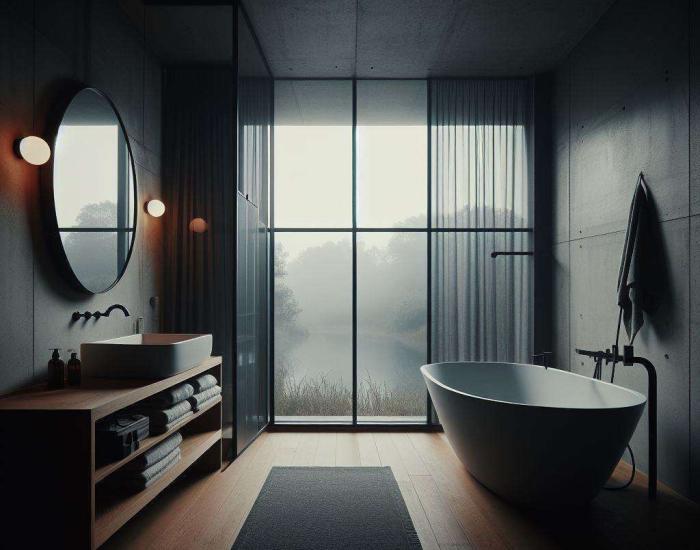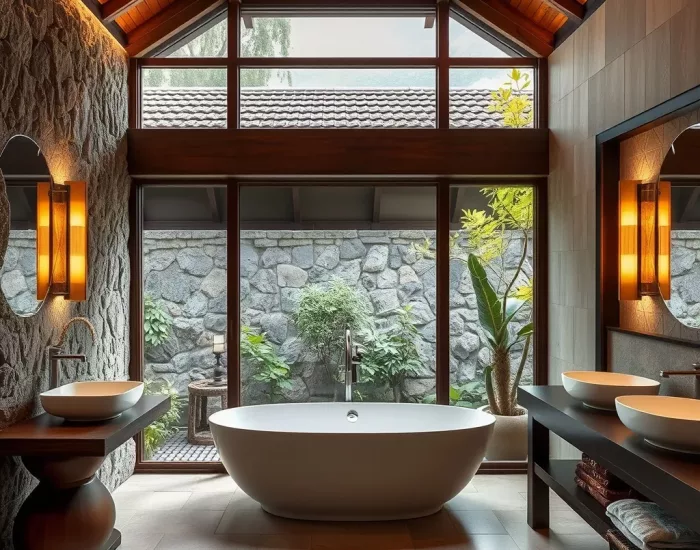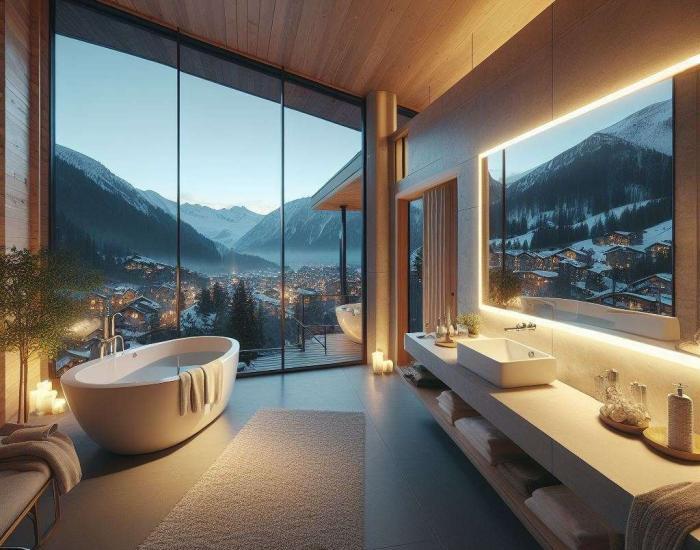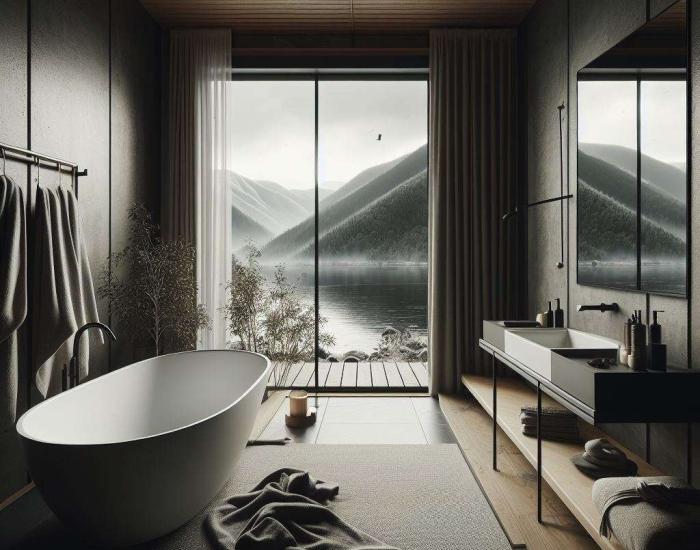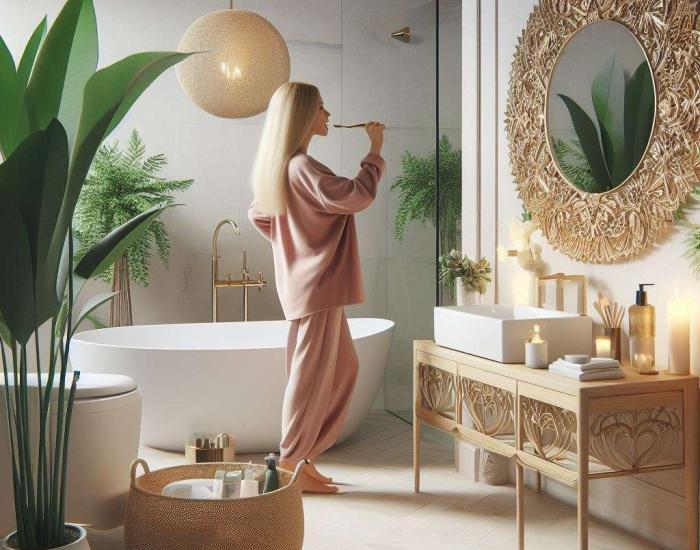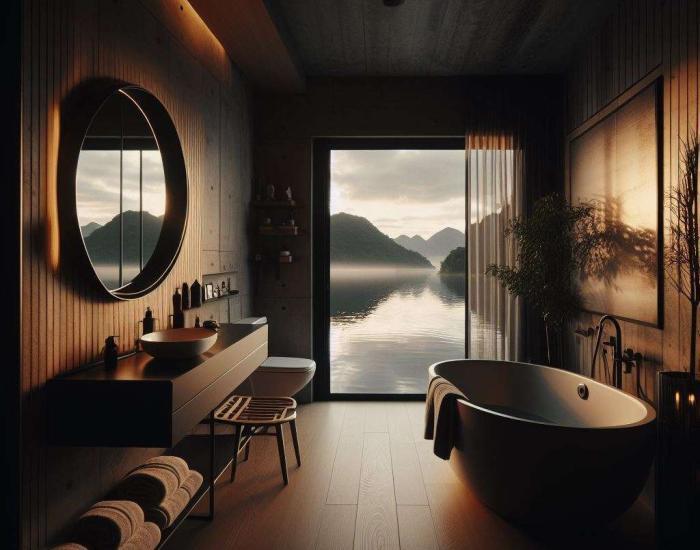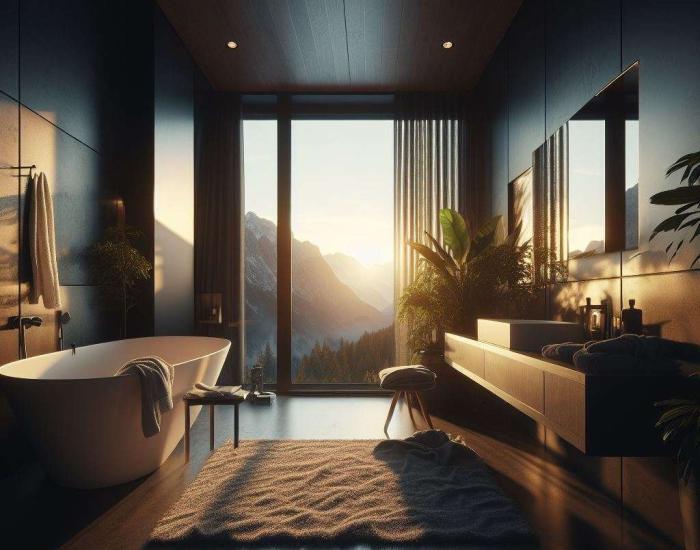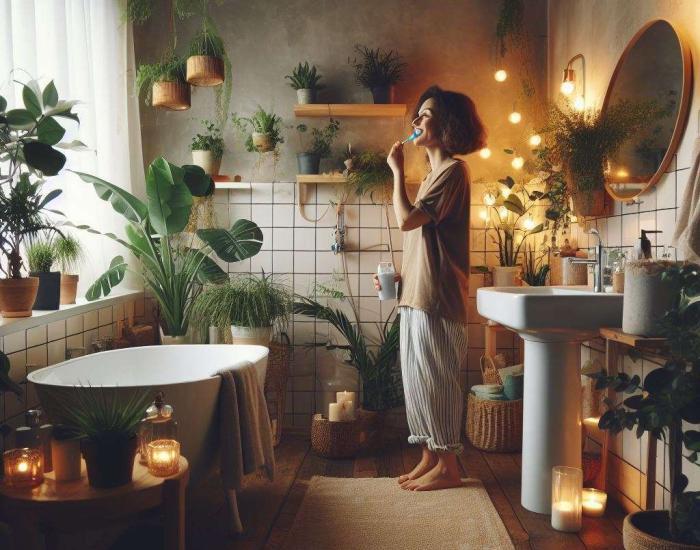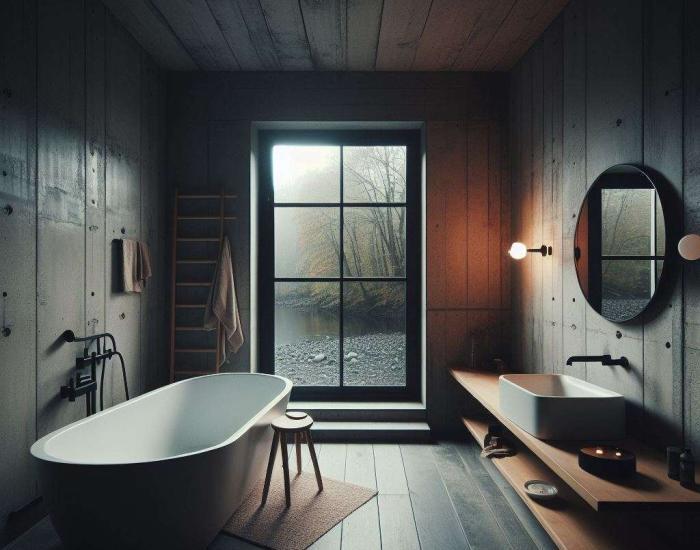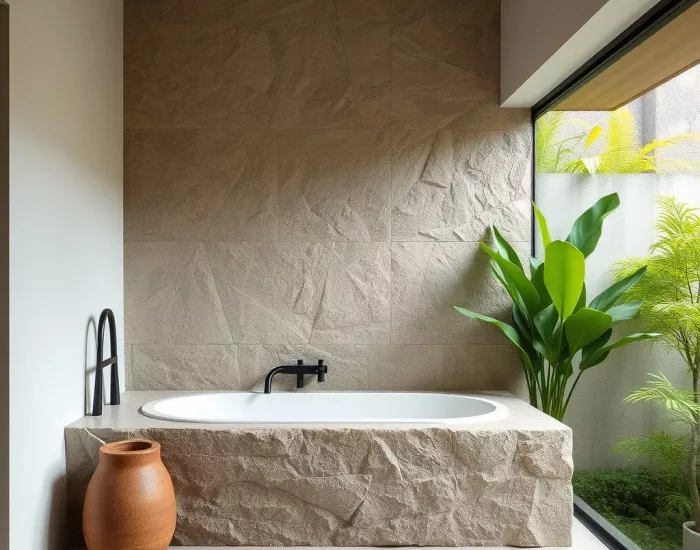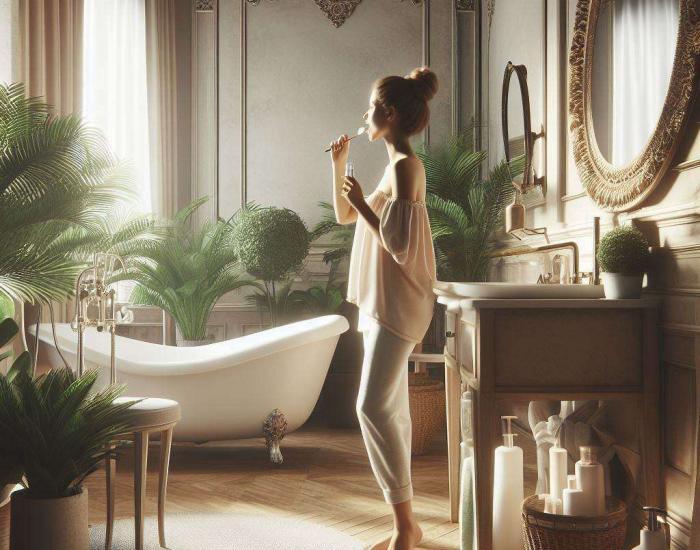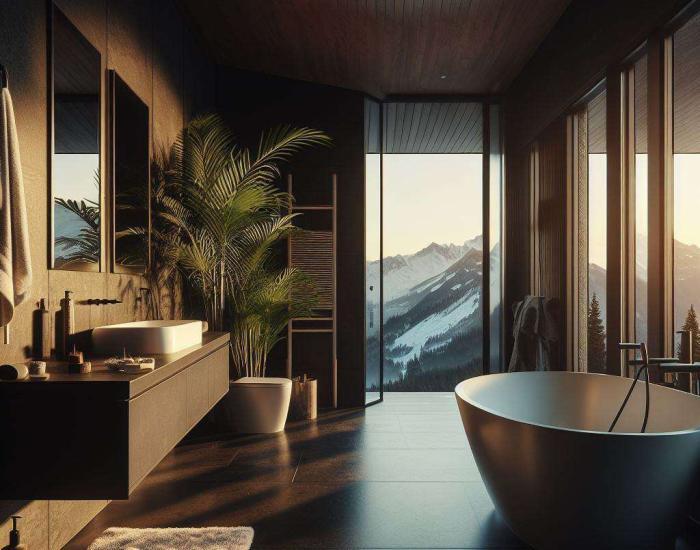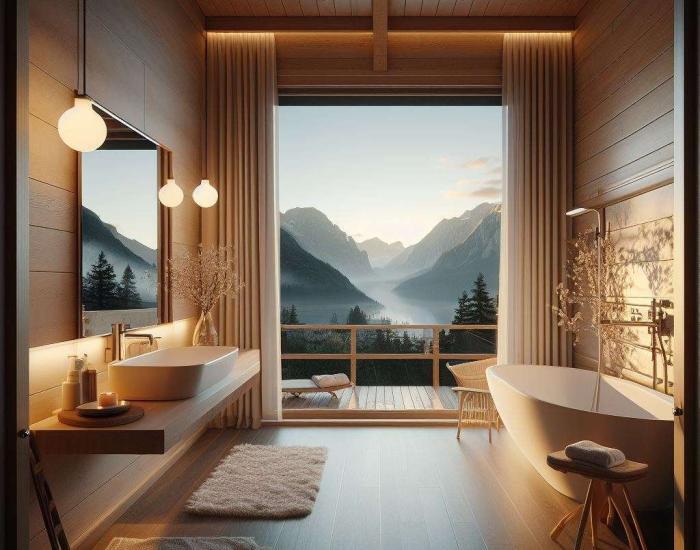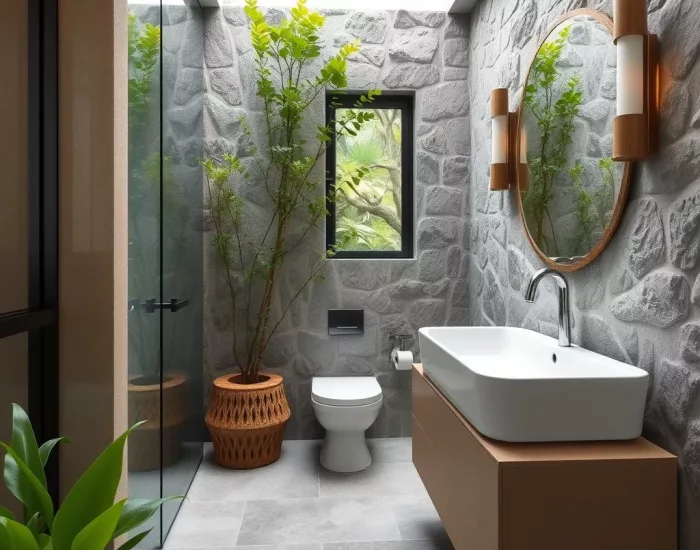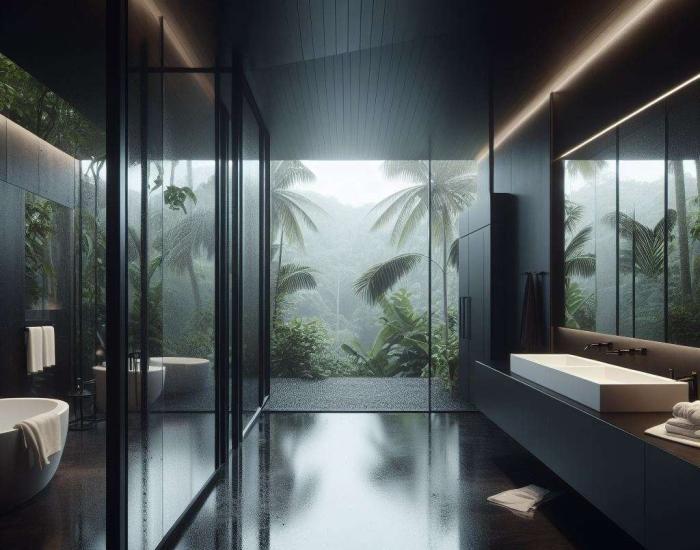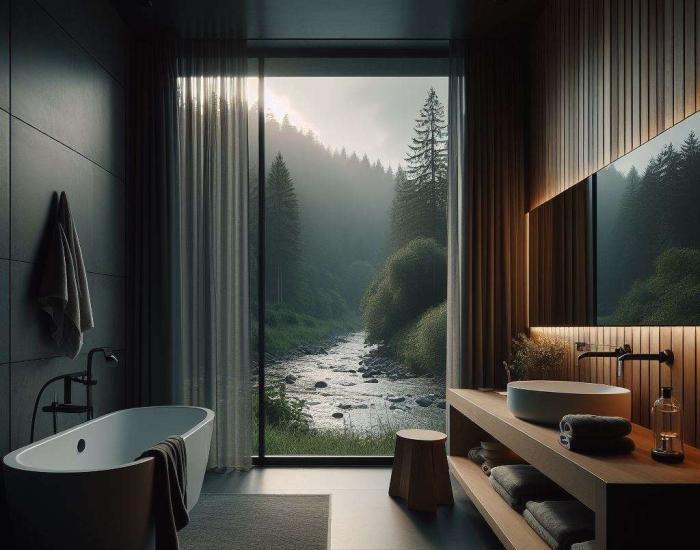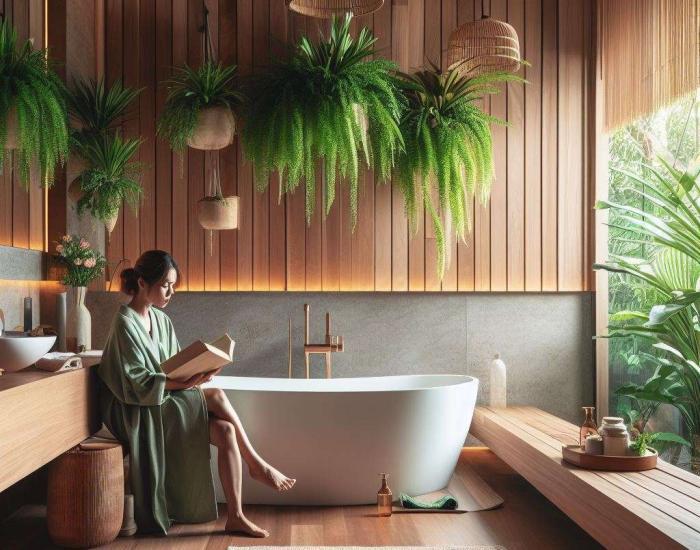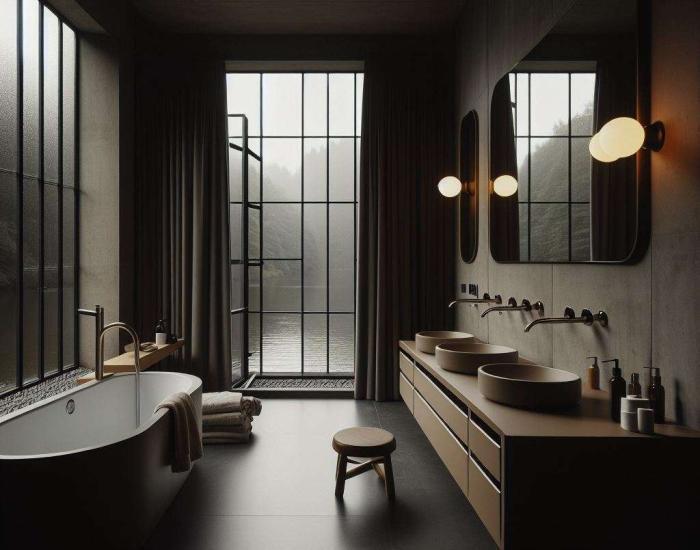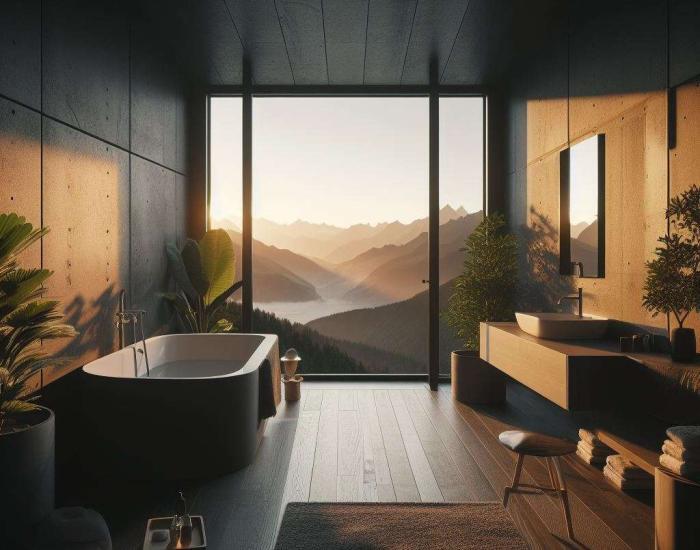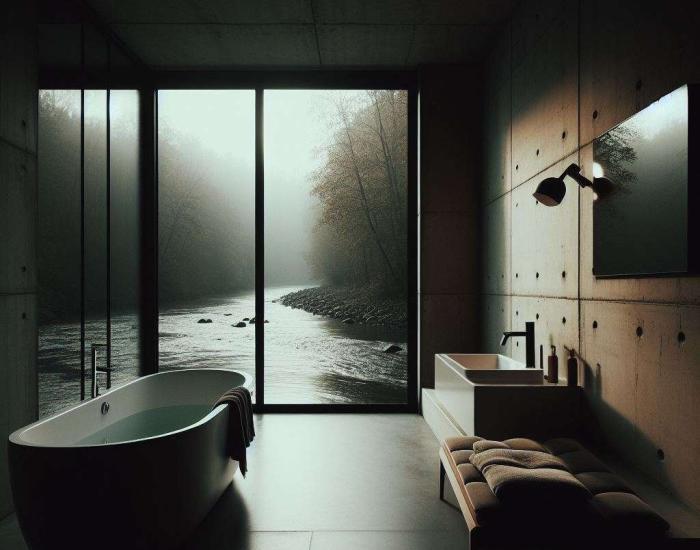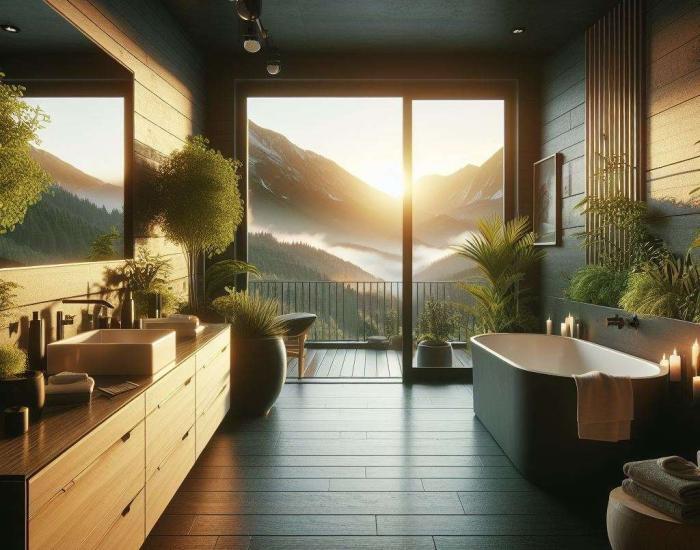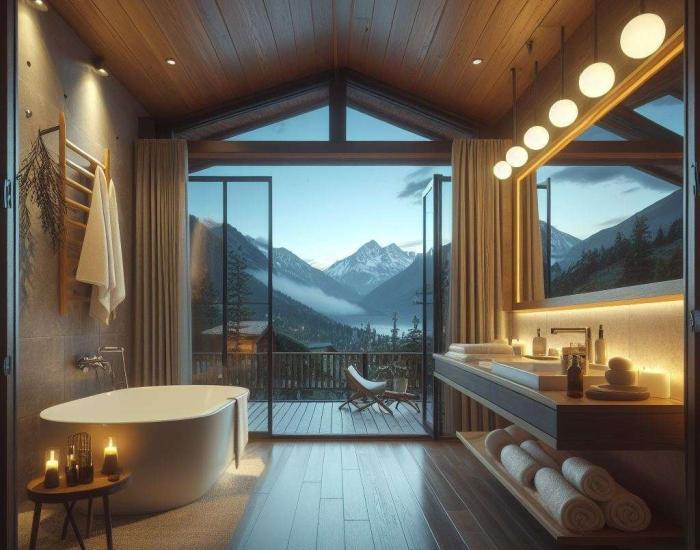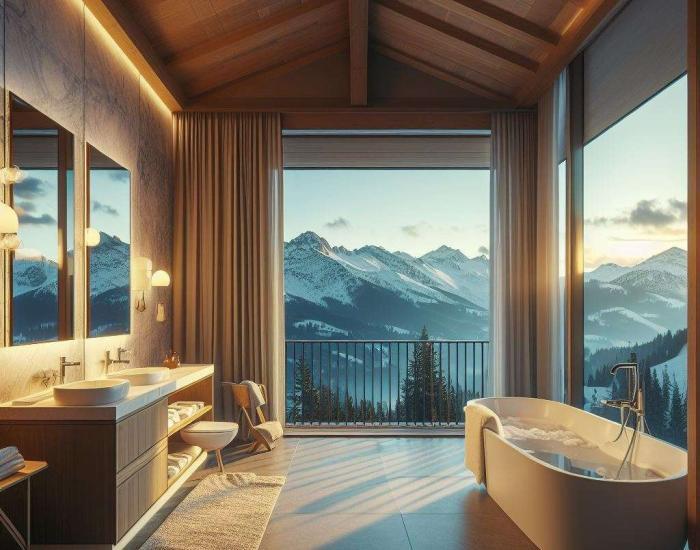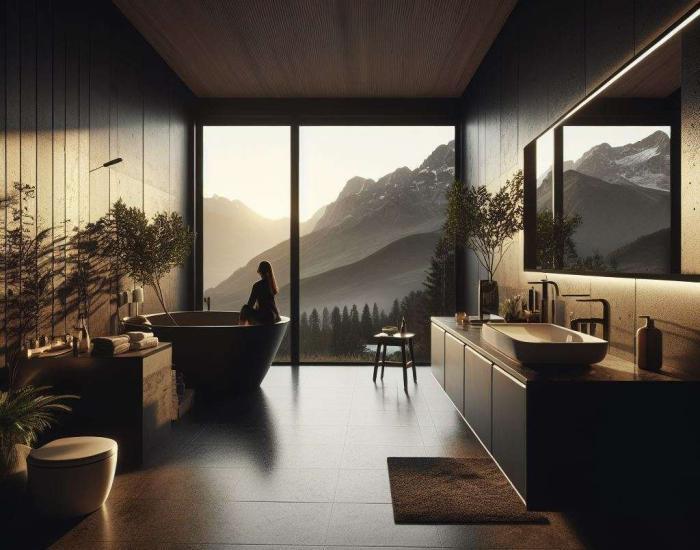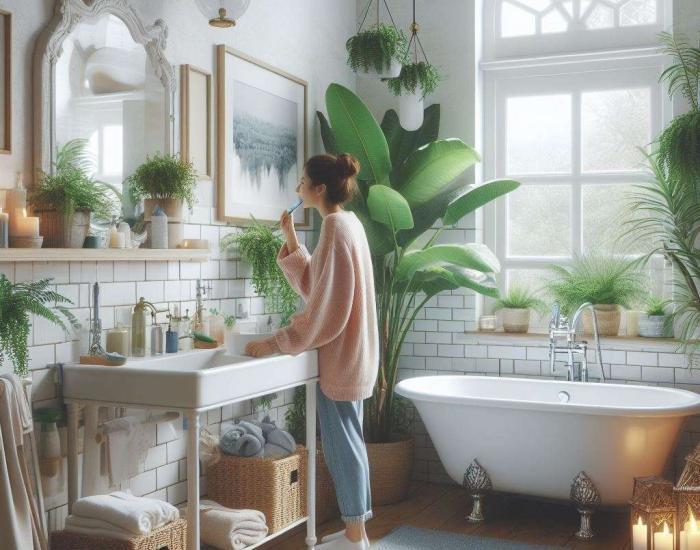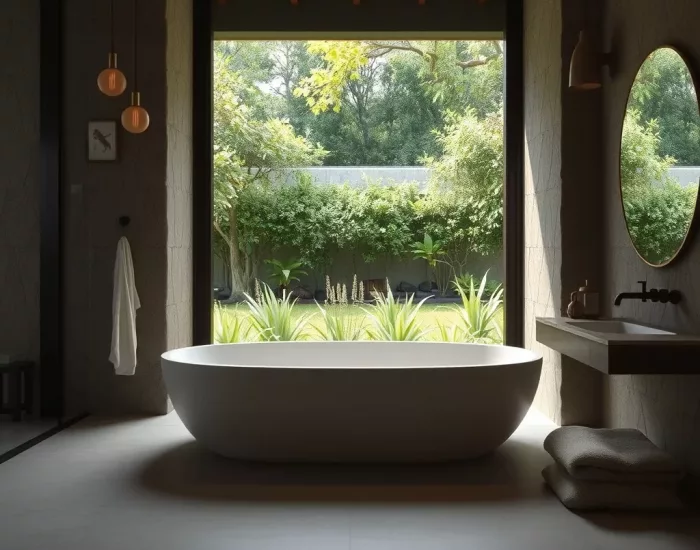AI Based Design
Bathroom Designs
Experience AI-driven interior design, where simplicity meets sophistication. Explore our collection of thoughtfully crafted bathrooms, each uniquely designed by artificial intelligence. Embrace the future of personalized design with subtle touches that redefine your living spaces. Discover the beauty of AI-inspired interiors, where innovation effortlessly blends with your individual style.
Bathroom design principles encompass a holistic approach to creating spaces that are both functional and aesthetically pleasing. At the core of these principles lies the balance between form and function, where every element serves a purpose while contributing to the overall visual appeal of the space.
Functionality is paramount in bathroom design. The layout should be carefully planned to optimize space utilization, ensuring efficient movement and easy access to fixtures and storage areas. Additionally, the selection of fixtures, materials, and finishes should prioritize durability and ease of maintenance, ensuring that the bathroom remains practical and hassle-free for years to come.
Aesthetics play a crucial role in defining the atmosphere of the bathroom. From the color scheme to the choice of materials and fixtures, every design decision should contribute to creating a cohesive and visually pleasing environment. Whether the style is minimalist and contemporary or classic and ornate, consistency and harmony in design elements are key to achieving a cohesive look.
Lighting is another essential aspect of bathroom design. Proper lighting not only enhances functionality but also sets the mood and ambiance of the space. Natural light should be maximized where possible, supplemented by artificial lighting that is strategically placed to eliminate shadows and provide adequate illumination for tasks such as grooming and makeup application.
Ventilation is often overlooked but is critical for maintaining a healthy and comfortable bathroom environment. Adequate ventilation helps prevent moisture buildup, which can lead to mold and mildew growth, as well as damage to fixtures and finishes. Incorporating exhaust fans or windows that allow for natural ventilation helps promote air circulation and maintain optimal air quality within the space.
Safety considerations are also important in bathroom design, particularly for households with young children, seniors, or individuals with mobility limitations. Non-slip flooring, grab bars, and accessible fixtures can help prevent accidents and ensure that the bathroom is safe and accessible for everyone.
Ultimately, successful bathroom design is about finding the perfect balance between functionality, aesthetics, and practicality. By adhering to these principles and tailoring the design to the specific needs and preferences of the users, a well-designed bathroom can become a haven of comfort, relaxation, and rejuvenation in the home.
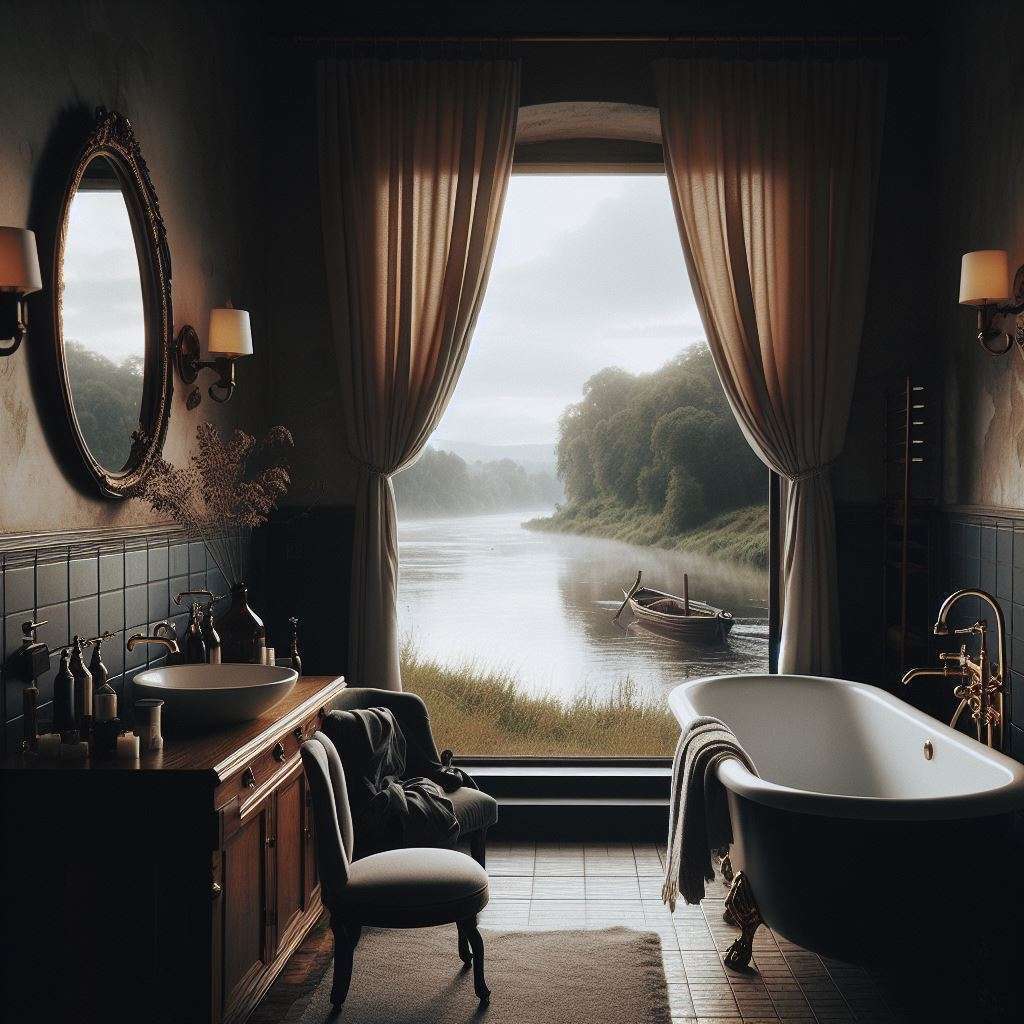
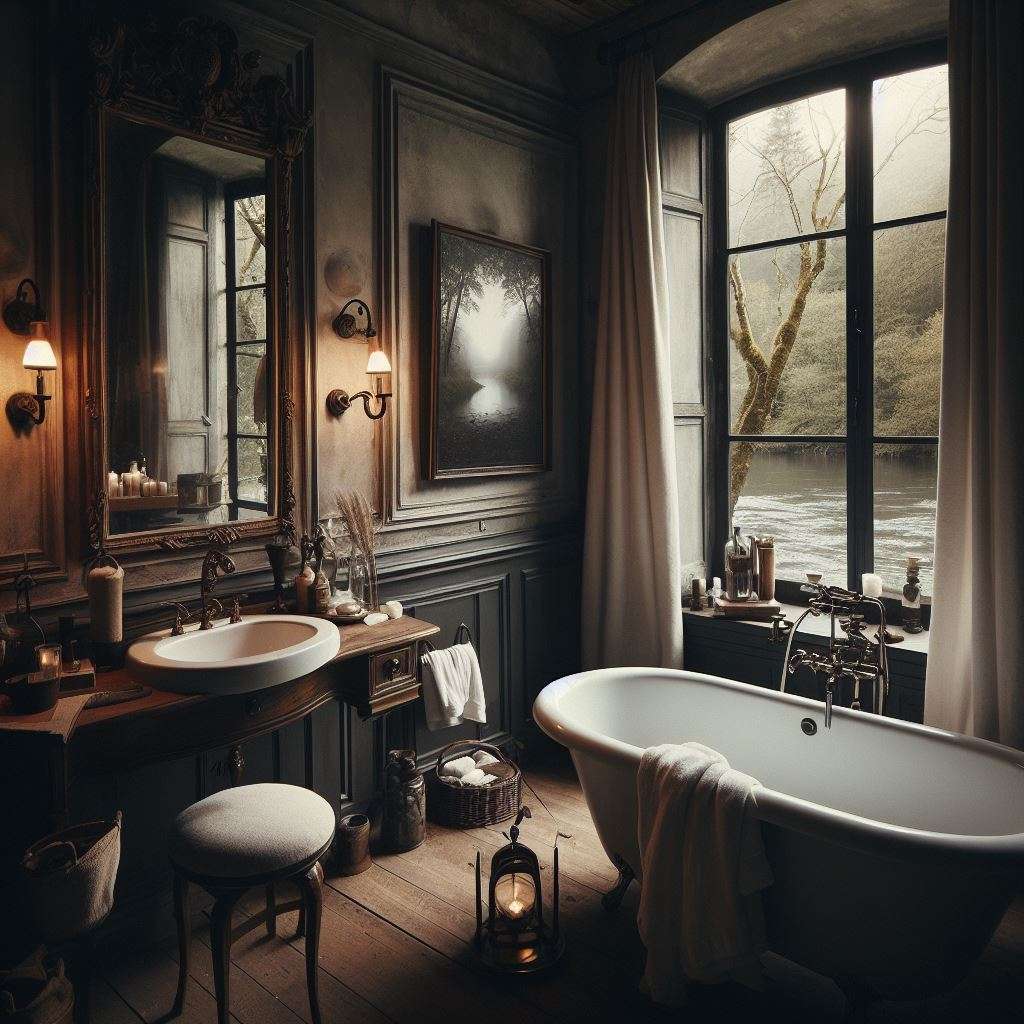
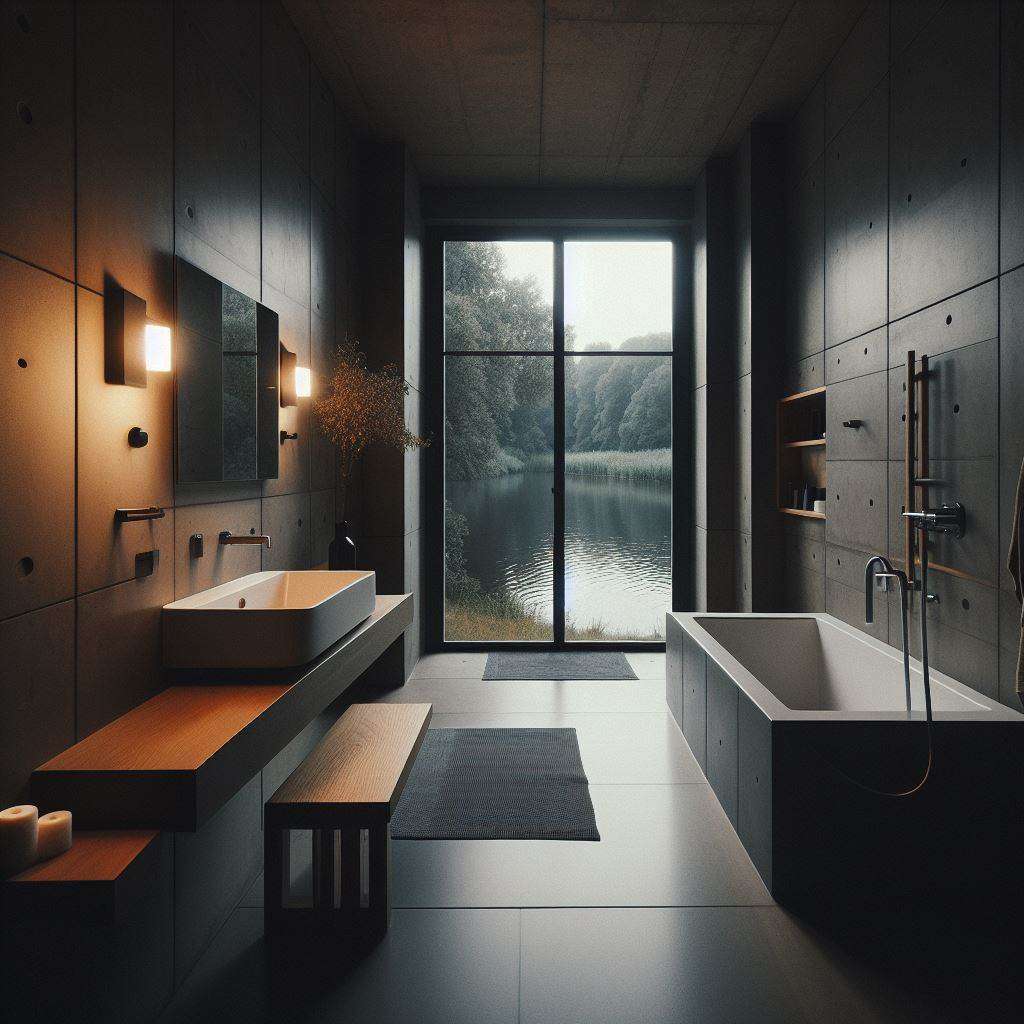
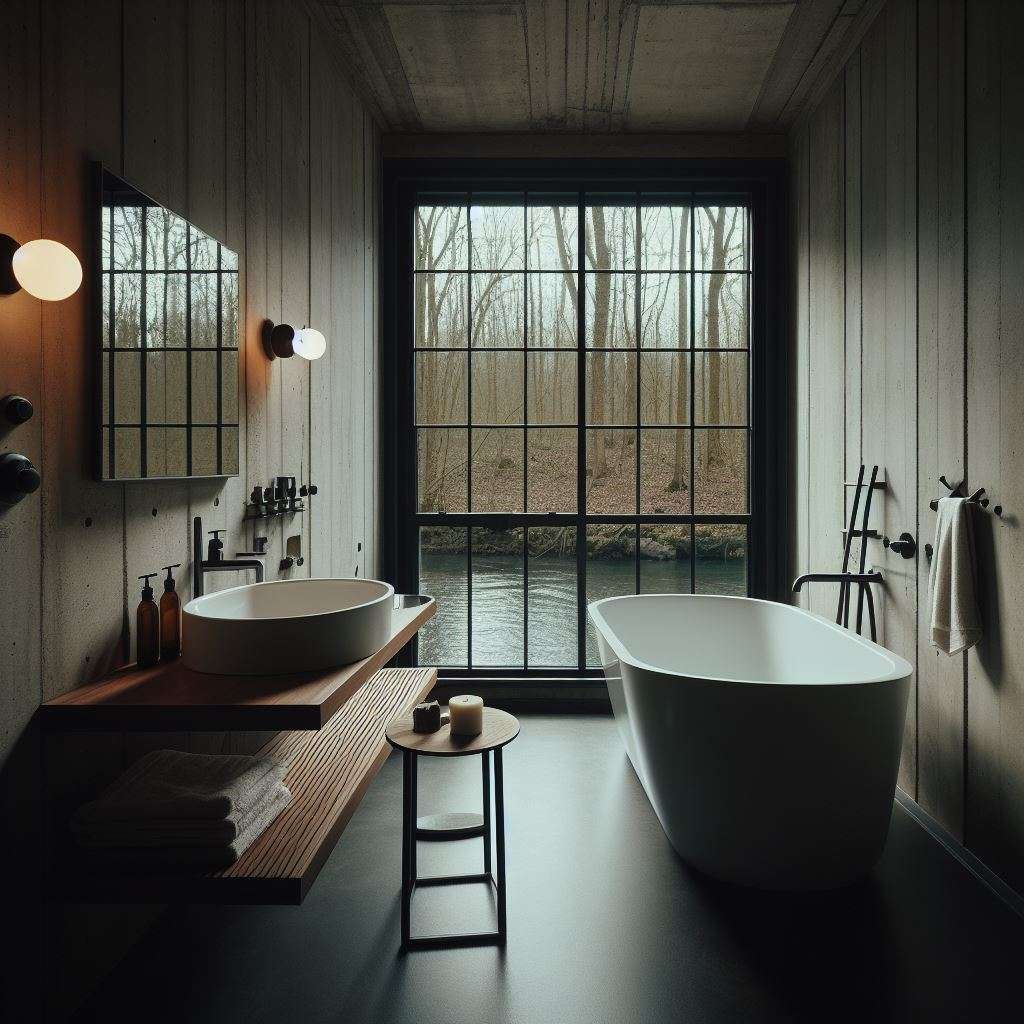
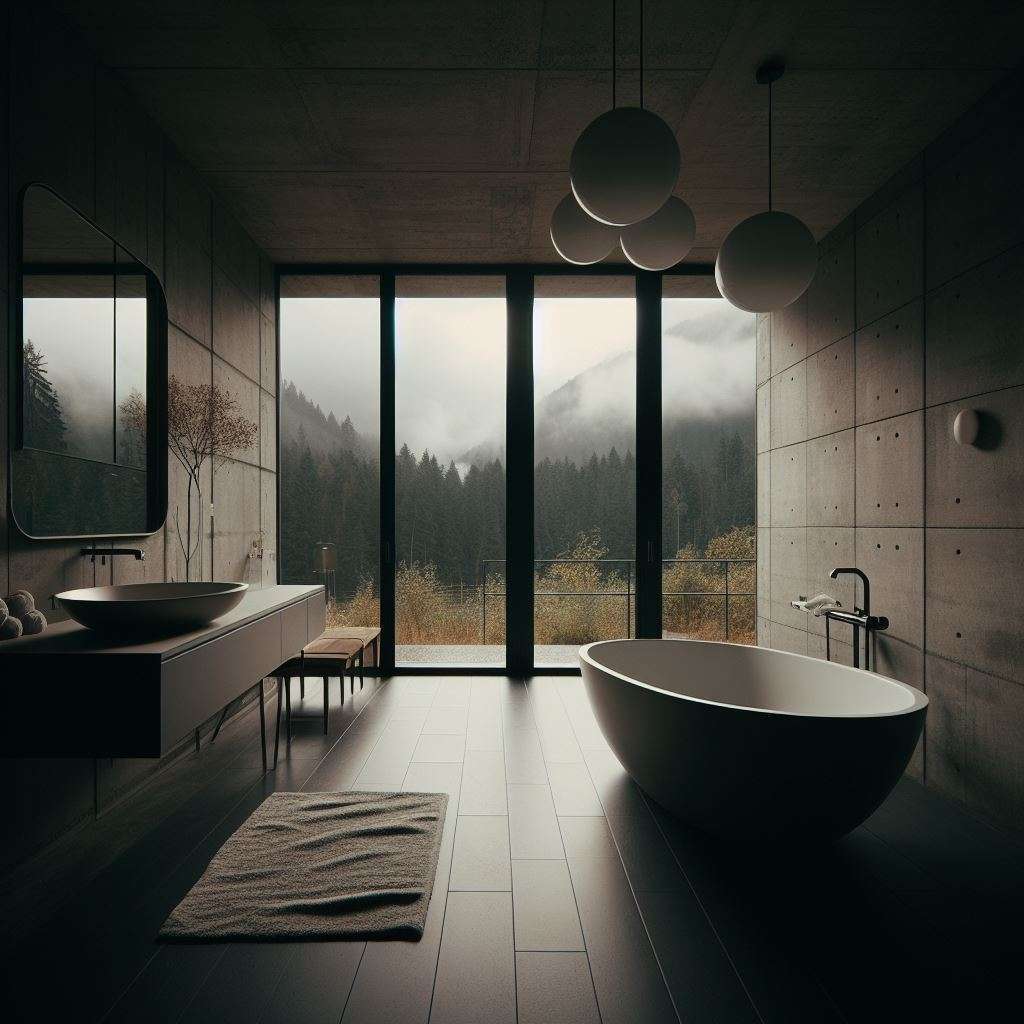
In summary – these important aspects contribute to effective bathroom design:
- Functionality: The bathroom should meet your practical needs, including storage, layout efficiency, and ease of use.
- Aesthetics: Design elements such as color scheme, materials, and fixtures should create a visually appealing space that reflects your personal style.
- Space Optimization: Maximizing space utilization is crucial, especially in smaller bathrooms. Clever storage solutions and layout planning can help make the most of available space.
- Lighting: Proper lighting is essential for functionality and ambiance. Incorporating natural light, task lighting, and ambient lighting can enhance the overall design and functionality of the bathroom.
- Ventilation: Adequate ventilation is important to prevent moisture buildup, which can lead to mold and mildew. Proper ventilation also helps maintain air quality and prolong the lifespan of fixtures and finishes.
- Safety: Incorporating safety features such as slip-resistant flooring, grab bars, and shower seating is essential, especially for seniors or individuals with mobility issues.
- Water Efficiency: Choosing water-efficient fixtures such as low-flow toilets and faucets not only helps conserve water but also reduces utility costs.
- Durability: Selecting durable materials and finishes ensures longevity and minimizes maintenance requirements, making your bathroom design more sustainable in the long run.
- Accessibility: Designing the bathroom with accessibility in mind ensures that it can be comfortably used by individuals of all ages and abilities.
- Personalization: Tailoring the design to your specific needs and preferences ensures that the bathroom reflects your lifestyle and enhances your daily routine.
